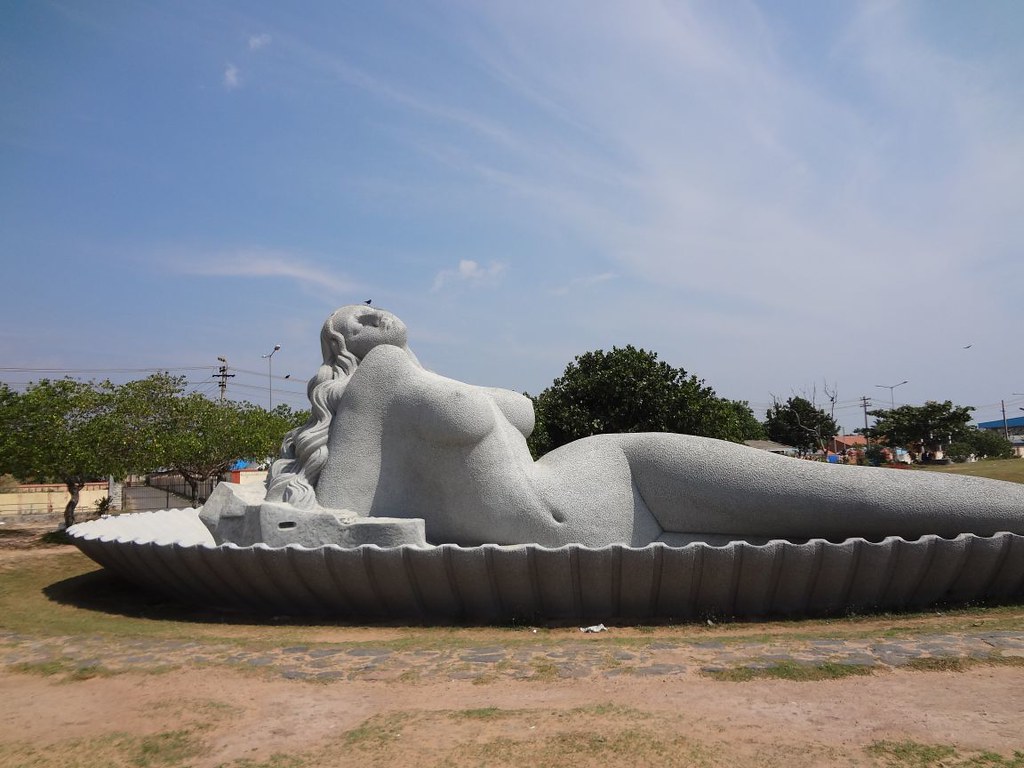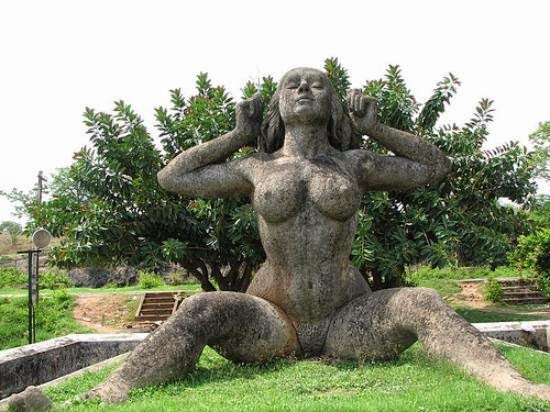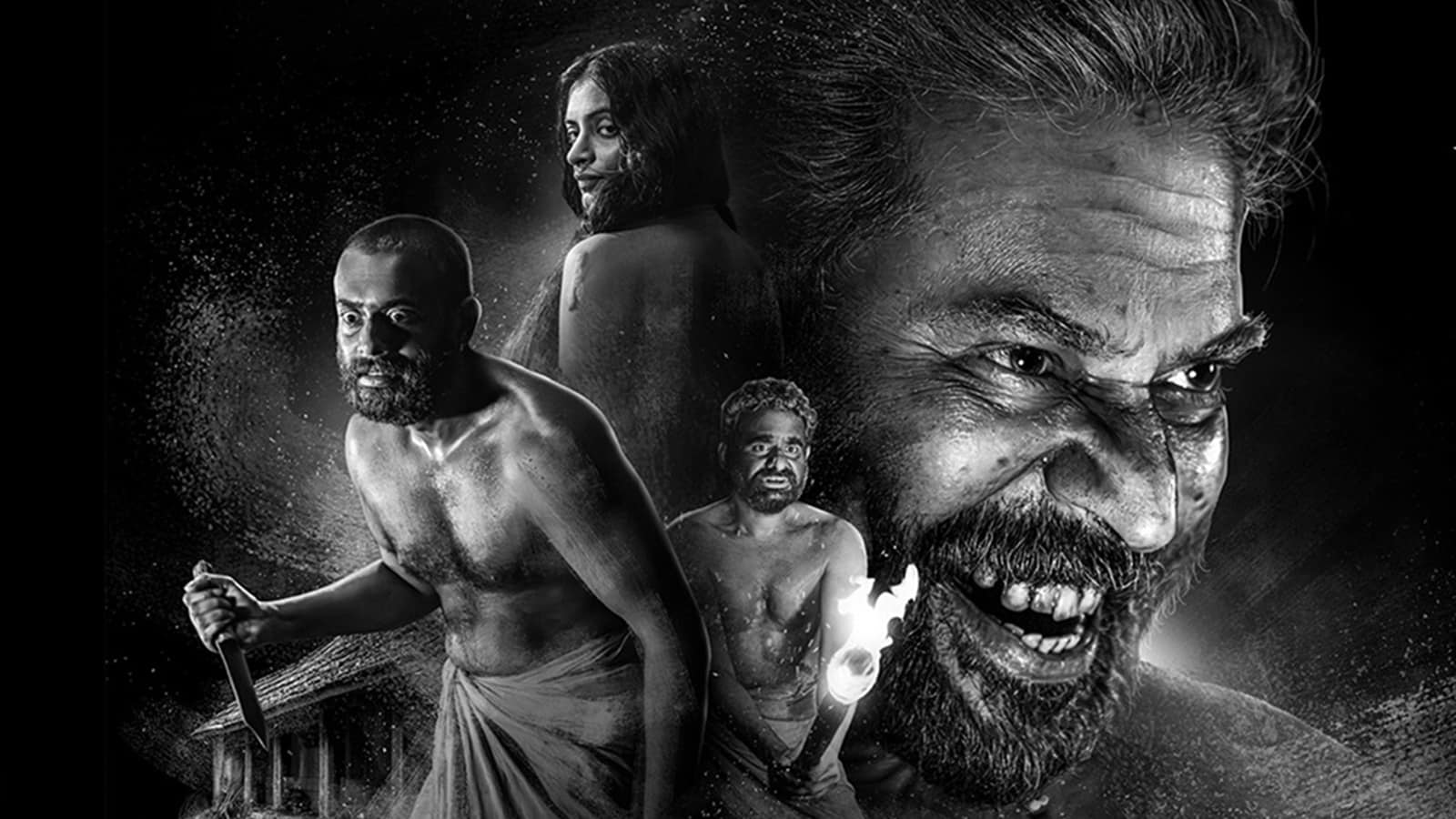Art and sculpture are said to be a depiction of the sum total of the theological contrasts that have spread and taken a toll on the state’s historical progression. Public art was always questioned for its legitimacy in imparting the true nuances of art. It has the potential to be both a beacon of democratic values and a cause of heated controversy.
As a consequence, the socio-political goals of individuals and groups frequently play a role in altering the position and substance of public art in order to concur with popular morals or aesthetic standards.
When it comes to public art sculptures, the 30ft, giant, nude sculpture Malampuzha Yakshi near the Malampuzha Dam in Kerala’s Palakkad district sits at the pinnacle of all art superstitions in Kerala, sparking a larger debate about the faulty moral views of the society. According to K. Jayakumar, the first honorary Vice Chancellor of Malayalam University, this work by sculptor Kanayi Kunhiraman is a “strike on false morals.” By fighting all odds against his interest, Kanayi completed the sculpture fifty years ago at a time when no one dared to install “nude” art in a public space.

Kanayi Kunhiraman is a sculptor who hails from Kasaragod, Kerala. An alumnus of the Government College of Fine Arts, Chennai, and the Slade School of Art, London, he is regarded as one of the country’s greatest sculptors. His work has ignited widespread interest and discussion on the use of space for public exhibition.
It not only critiques conservative notions of art and artists, but also asserts the place of art in a democratic, cultural and social framework, which is an artistic revolution in and of itself. This marks Kanayi as a significant figure in the postmodern art geography of Kerala.
When we concentrate on the changes in the transcendence of spaces in the context of Kerala, the use of public spaces has been the crux of many debates. There is little evidence of this kind of intervention before the 1970s, and he made a significant jump through his artistic installations in contrast to the society that chastised him. Kanayi went on to create several other radical sculptures after Yakshi, including the 110-foot-long Sagara Kanyaka or “Mermaid,” at Trivandrum, among others.
Kanayi’s work is groundbreaking and has intervened and caused a leap of spirit in educated young people of the modern day. “I became aware of many exemplary views about nudity while studying in England. Nudity is also a part of life. Nudity attracts no attention. Because the realisation about nudity occurred in the mind and vision, Yakshi was used to undermine orthodox consciousness”, says Kanayi

“Art is about jolting people up, not lulling them to sleep,” Kanayi said in an interview to Malayala Manorama. Whilst researchers typically presume that humans wore clothing to cover parts of their bodies, many prehistoric sculptures featured females more than males, and they were typically portrayed nude. This could be one of the reasons why women, rather than men, frequently appeared as models.
Kanayi’s work is groundbreaking and has intervened and caused a leap of spirit in educated young people of the modern day. “I became aware of many exemplary views about nudity while studying in England. Nudity is also a part of life. Nudity attracts no attention. Because the realisation about nudity occurred in the mind and vision, Yakshi was used to undermine orthodox consciousness”, says Kanayi.
For the Yoruba, a tribe in Nigeria, nudity in art is an intrinsic element. It is also a vital part of religion and philosophy, acting as the visual regalia used for the worship of numerous deities. The term “naked” refers to something that is no longer veiled or private. It denotes genuineness (Okediji, 1991). According to Okediji, the nude allows artists to convey and unveil some secret elements and subtleties of existence, particularly those that are buried and not easily encountered in everyday life challenges. This means that they could employ naked bodies to vividly depict the birth, purpose, and desires of the society.
Also read: Rebellious Thighs In Summer Shorts & The Jazz At Our Homes That Never Stops Playing

In essence, the nude in art is the culmination of an idea developed over a prolonged term of experimenting, and it implies a philosophy of humanity. The primary tenet of this philosophy is that the human body is exquisite and purposeful, especially when it is modified by increased vigour or the creative process.
It is vital to state and emphasise that no nude, no matter how conceptual, should fail to generate some residue of sensual feeling in the observer, even if it is only in the slightest shade. If it does not, it is bad art and false morals. The tenth-century Indian temple sculptures are an unmasked celebration of physical desire; nonetheless, they are magnificent artworks because of the sensuality which is a part of philosophy.
The choice of what ought to be displayed was left to the individual and state to answer. We say art is divine. The idea of divine works in tandem with the notion of real. The more we improvise the idea of reality, the farther we go away to a material world defined by a sense of deception, moral policing and escapism
Indistinct mortal beings were often the topic of Indian sculpture, which was used to portray the Hindu, Buddhist, or Jain religions. The nude was utilised to depict the body as a sign of spirit as well as to show the gods in their envisioned forms.
The subjects of sexuality and fertility were never left out from Indian sculptures. They continue to adorn a pivotal canon of the art culture in India. However, the existence of patriarchal norms in the changing socio-political set up nullified their significance and deemed them “tainted” from the very beginning of its evolution. In their art, all of the country’s major religious factions – Hindu, Buddhist, and Jaina – have included sensual motifs.
Sexual portrayal was a common cultural aspect across India. It alludes to a shared cultural foundation that impacted religious factions across India. One should never cease to accredit Kanayi for breaking the moralistic stereotypes around the public exhibition of nudity.

It is imperative for us recall the Biblical first humans, Adam and Eve, who were brought to life without any clothing. However, the evolution of society did find its way to a more paradigmatic mode of living where clothing became a tool for the concealment of one’s own physical appearance.
The choice of what ought to be displayed was left to the individual and state to answer. We say art is divine. The idea of divine works in tandem with the notion of real. The more we improvise the idea of reality, the farther we go away to a material world defined by a sense of deception, moral policing and escapism.
But life is all about embracing the real. If you feel it’s not, “Hey, did you miss the bus to the 21st century?”
Also read: Free The Nipple: The Feminist, Political Act Of Defiance And Resistance By Women
Krishna Priya is an undergraduate student of literature. She is a movie buff and relies on the spirit of music and dance. You may find her on Instagram




